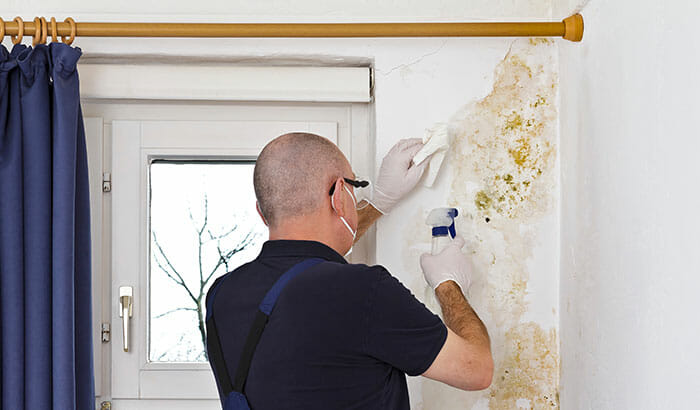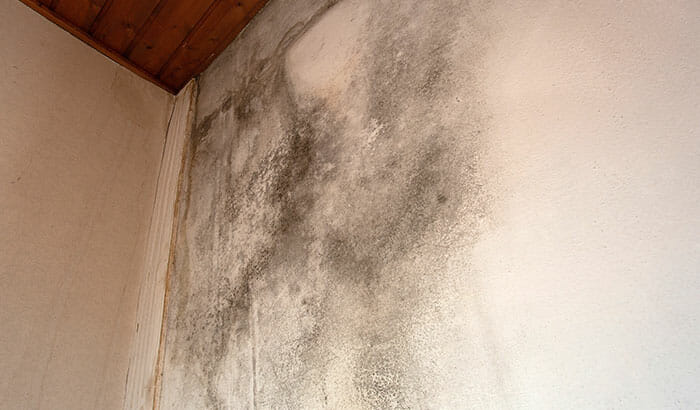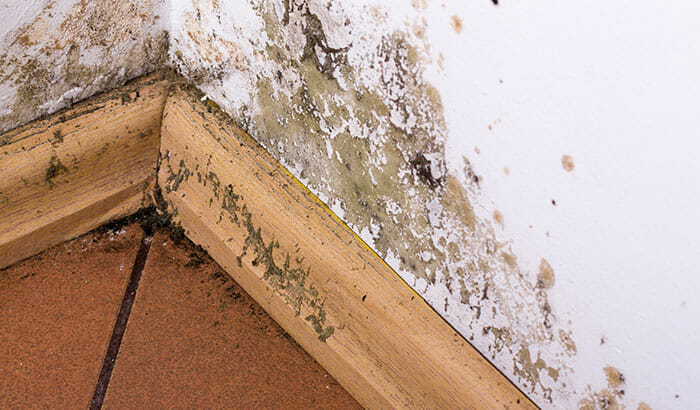Mold is a common problem in many homes and can have serious consequences for those living in a house with mold. But it’s not just a cosmetic issue — mold can be harmful to your health.
It’s crucial that you understand the dangers of living with mold and know what to do if you think it’s lurking in your home, so to help you out, we’ve put together a list of 9 important things to keep in mind when it comes to mold.
From recognizing the symptoms of black mold to the steps you need to take to get rid of it, this information will help you make informed decisions and take care of your health and well-being.
1. Types of Mold
One of the first things you should do when you think you have mold in your home is to understand the different types of mold and their effects on your health.
There are a few different types of mold. Black mold is one of the most dangerous; it produces toxic substances that can be detrimental to your health. Other molds can be harmful as well.
Before cleaning up or making any decisions, try to identify what kind of mold you’re dealing with.
2. Symptoms of Mold Exposure
Breathing in moldy air in your house can seriously mess with your health. You might experience breathing trouble, headaches, or skin irritation as some common symptoms.
In the worst-case scenario, mold exposure can lead to bigger health problems like weakened immune systems or brain problems. If you’re feeling any of these symptoms, it’s smart to think about whether mold could be the culprit and what you should do to get rid of it.
3. How to Test for Mold
It is important to conduct proper testing to determine if mold is present in a home. There are both DIY methods and professional inspections available. DIY methods — such as mold test kits — can provide quick results but may not be as accurate as a professional mold inspection.
Professional inspections, on the other hand, are more thorough and accurate. It is crucial to use proper testing methods, as improper testing can lead to false negative results and misdiagnosis of the mold problem.
4. How Does Mold Affect my Health?
Mold exposure can significantly impact your health and well-being, and it’s crucial to take it seriously.
The symptoms of black mold exposure can range from mild to severe and can affect various aspects of your health, including your respiratory system, skin, eyes, and mental health.
Respiratory symptoms, such as coughing and wheezing, are common in those exposed to black mold, as well as skin irritation and rashes. Headaches, fatigue, and eye irritation are also symptoms of black mold exposure that can affect your daily life.
While not everyone will experience symptoms, individuals with weakened immune systems or pre-existing respiratory conditions are at a higher risk of developing health problems from black mold exposure.
5. How to Remove Mold
When a home has a mold infestation, it is essential to implement effective remediation measures. The mold inspection involves accurately identifying the source of mold growth, thoroughly cleaning up the contaminated areas, and implementing measures to prevent any recurrence.
During the remediation process, it is imperative to use personal protective equipment such as gloves, masks, and protective clothing to minimize exposure and prevent the spread of mold spores.
Removing mold without proper protective gear and procedures may result in potential health hazards. To ensure thorough and safe mold removal, it is recommended to seek the assistance of a qualified professional.
6. How to Prevent Mold
Living in a house with mold is far from ideal, and prevention is key when it comes to dealing with mold.
Proper ventilation, moisture control, and consistent cleaning are the cornerstones of preventing mold growth. By maintaining a home humidity level below 50%, the likelihood of mold growth is greatly reduced.
Water leaks or dampness are often the root cause of mold. Regular cleaning in areas prone to high humidity and moisture will help keep mold at bay. By taking these preventative steps, you can safeguard your family’s health and keep your home mold-free.
7. The Cost of Mold Removal
The cost of mold removal and remediation will vary depending on various factors, including the mold amount, the mold’s location, and the type of mold present. If you currently have mold in your home, it’s better to take care of it right away to avoid paying more down the road.
The cost of timely and thorough mold removal is far lower than the potential damages caused by leaving it alone, making it an investment worth making for both your wallet and health.
8. Does Insurance Cover Mold Issues?
Insurance policies can vary greatly when it comes to mold damage, but there may be some coverage available in some instances. In many cases, homeowner’s insurance will cover the cost of removing the mold if it is considered a threat to your health or structural integrity.
Additionally, it may be covered if the mold was caused by a covered incident, such as a water leak from your dishwasher. It’s important to read your policy closely and be sure that you fully understand what is and isn’t covered in terms of mold damage.
9. When to Move Out
If it is determined that you have an unsafe amount of mold in your home through a mold inspection, it is recommended that you move out as soon as possible. The longer you live in an environment with harmful mold levels, the more likely your health will suffer because of it.
Let Bull Matrix Restoration Give You Peace of Mind
Don’t let mold take over your home! At Bull Matrix Restoration, we specialize in providing top-notch mold removal services to ensure a safe and healthy environment for you and your loved ones.
Our team of experts uses state-of-the-art techniques and equipment to quickly and effectively eliminate mold from your home. Say goodbye to mold and hello to peace of mind with Bull Matrix Restoration. If you’re living in a house with mold, contact us today to schedule your mold removal appointment!



